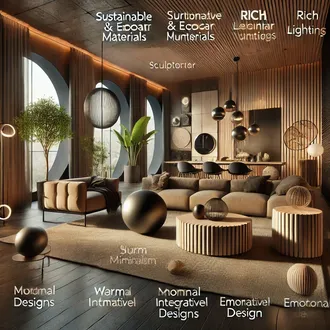Transcription Decoration of small businesses
Decoration is one of the most effective tools to provide additional value to businesses, as it contributes significantly to customer satisfaction and repeat visits in the short or medium term. A well-decorated space not only attracts new customers, but also promotes products and enhances the image and personality of any business.
The decoration of small businesses differs from the rest of the spaces seen in this course - homes and offices - in that to design a commercial space, not only the interests of the owner must be taken into account, but also the levels of needs of the public that will frequent the site; an element that is closely related to the age, sex, socioeconomic level and other more personal aspects of the customers.
On the other hand, when decorating a commercial space, special attention should be paid to the relationship between the physical dimensions of the human body and the size and distribution of the objects; for example: the height at which to place the rows where clothes are displayed in a store, or the minimum distance that can exist between one table and another in a restaurant.
Levels of consumer needs
When decorating commercial spaces we must know what kind of needs the individual has. According to Abraham Maslow -eminent American psychologist and exponent of humanistic psychology- human beings have different levels of needs that arise as the most basic ones are satisfied.
To explain the hierarchies of the different types of needs Maslow made the following pyramidal scheme:
- As we can see the scheme has five levels of needs that can be described as follows.
- Physiological needs - food, breathing, rest, etc. - are the only ones that are born with the individual, manifesting themselves spontaneously or unconsciously.
- Safety needs are related to physical protection, a healthy environment, cleanliness, stability, possession of resources.
- Affiliation needs are linked to the search for social recognition, friendships, sexual intimacy, etcetera.
- Recognition needs are related to the desire to provoke admiration, to acquire prestige, to command respect.
- Self-fulfillment needs are associated with the desire to solve problems, achieve purposes, reach goals, accept facts, and so on.
It is important for decorators to master and apply Maslow's theory of human needs in order to achieve through decoration an environment that satisfies the needs of a greater number of individuals, thus contributing to increase the prestige and the number of customers of the business. Page break.
Aspects to take into account when choosing decorative elements for a commercial space.
Prioritize the quality and durability of the materials to be used: In businesses there are many people who daily make use of the furniture and come into contact with the devices, utensils and accessories arranged for the exhibition or promotion of products; this causes the useful life of these elements to be considerably reduced if they do not have sufficient quality.
In the selection of furniture it is essential to consider its functionality: It would be useless to select strong, beautiful and durable furniture if it is not comfortable or its dimensions do not adjust to those required for the optimal fulfillment of its functions. Consider the versatility of the elements: Timeless and versatile materials and designs should be chosen that can be transformed or reused, when the style, colors, lighting or arrangement of objects is modified.
Respect aesthetic coherence in the selection and management of decorative resources: The decorator must select the decorative elements taking into account a defined aesthetic criterion, in accordance with the interests and characteristics of the potential clients of the business and with the character and style to be projected.
Guidelines to follow in the decoration of commercial spaces
- Specify the concept or business image: To define the image of the premises we must consider the type of commercial activity to be carried out; for example, if the business is a food business, we must be clear about the type of restaurant we want to create: a theme restaurant, a gourmet restaurant, or a specialty restaurant.
You must also take into account the tastes, needs and characteristics of the public that will frequent the site, the desires and aesthetic ideas of the owner, the location and architectural characteristics of the facility, among other aspects. The more information you take into account, the more accurate the image you will be able to transmit.
- Select the colors of the walls and other large surfaces: The recommended tones for businesses are light - mainly greens, blues, pinks and grays - since they transmit calm and security; many decorators even opt for white on the ceilings and walls to visually enlarge the space, highlight the products being sold and give the sensation of cleanliness, tranquility and order.
Darker colors are recommended for furniture, workers' uniforms, curtains, carpets, vinyl printed motifs -photographs, illustrations and phrases-, and so on.
- Use lighting to reinforce the d
decoration consumer




